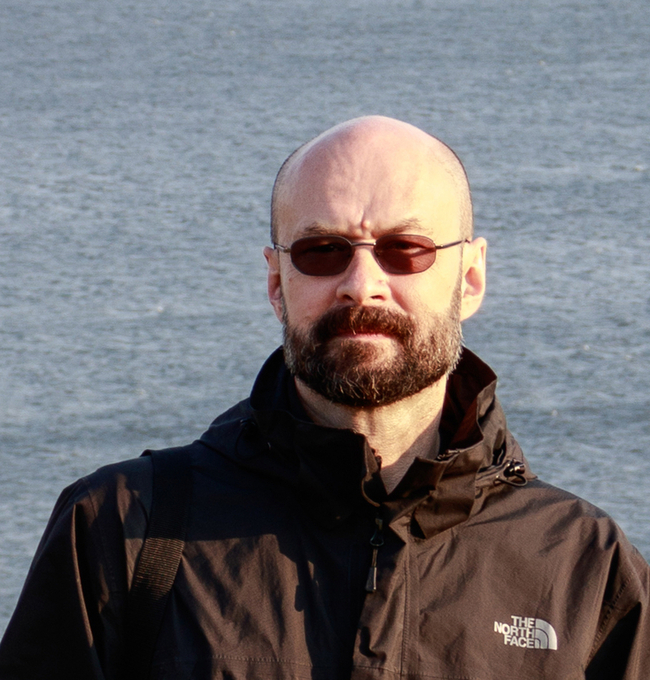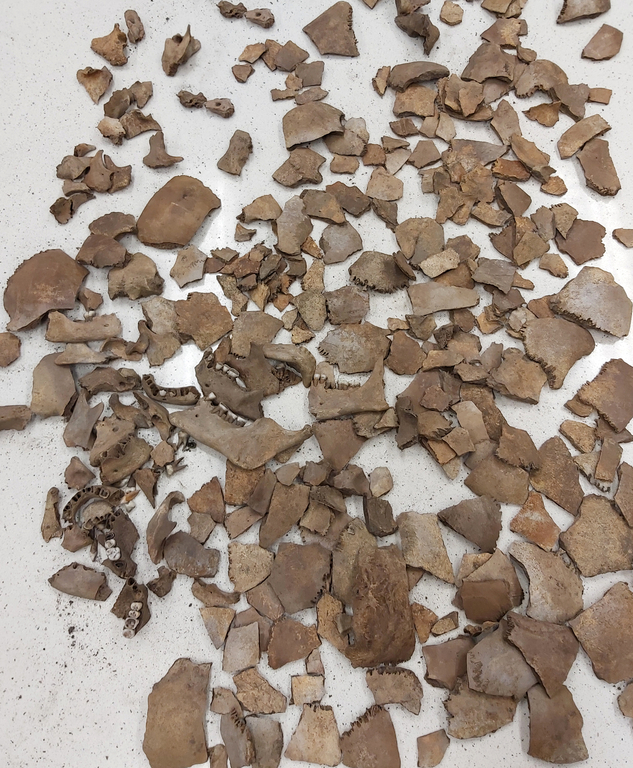Already at an early stage of the research, we can conclude that the people these remains come from do not differ significantly in genetic terms from people living in Poland, for example, in the early Middle Ages. This research may shake up the current theory, according to which the Slavs came to present-day Polish lands only at the beginning of the second half of the first millennium AD
– says Dr hab. Wiesław Lorkiewicz, Associate Professor at the University of Lodz who is a biological anthropologist from the Department of Anthropology.

Dr hab. Wiesław Lorkiewicz, Associate Professor at the University of Lodz
Where did these bones come from?
Human remains, as well as numerous artifacts from the Bronze Age, have been found in the village of Papowo Biskupie in the Chełmno land by the Kuyavian-Pomeranian Group of History Seekers. This discovery itself turned out to be groundbreaking, as a total of over 550 objects made of metal and dating back to the era preceding the Iron Age were discovered at this site. – The research on this discovery is led by archaeologists from the Nicolaus Copernicus University in Toruń, Prof. Jacek Gackowski and mgr Łukasz Kowalski, who deal with the Bronze Age and the Early Iron Age – explains Prof. Lorkiewicz. – Thanks to many years of cooperation between the faculties of our universities, I was invited to examine human bones that were also found at this archaeological site.
It turns out that in the place where the artifacts were discovered, there was once a large, but quite shallow lake, which was drained in the 19th and 20th centuries. Everything indicates that before the first millennium BC sacrifices were made in this lake.... human sacrifices.
Whose remains are these?
The bones that came to the laboratory of Prof. Lorkiewicz, turned out to be very fragmented. First of all, it was necessary to assess how many people they could come from.
Using a method applied in forensics, for example when examining the remains of victims of mass disasters, it was possible to determine the minimum number of people. Minimal, which does not mean actual, because there may be more. We have managed, among other things, to estimate that the bones come from over thirty people with almost the full range of sexes and ages in the population. There are bones of people of all ages, from infants to adults, and among the latter, both men and women. However, we have not found bones of older people, over 50 years old, which, for example, would have degenerative changes characteristic of such an age
– explains Prof. Lorkiewicz.
Why are these bones important?
The Lusatian culture existed for almost 1,000 years (from approximately 1300 BC to approximately 400 BC) in what is now Poland, eastern Germany, the Czech Republic, Slovakia and western Ukraine. The cremation funeral rite is a characteristic rite of this culture. – The deceased were cremated on a wooden pyre, and after burning, their remains were placed in a special vessel called an ashtray or urn and placed in the grave. It was probably related to the beliefs of the time and was a condition for entering the afterlife – explains Prof. Lorkiewicz.
The thing is that bones that have been burned cannot be tested for genetics. A find as large as the one from Papowo Biskupie constitutes a unique collection of research objects. Thanks to DNA research, the possibility of answering the questions: who were these people? what did they look like? how did they live? is greatly expanded.
What do the bones say or what do they not say?
Entire collections of human skeleton bones have been found at the site in Papowo Biskupie, but they were highly fragmented. – Archaeologists interpret this find as human sacrifice, which means we can assume that the death of these people occurred in rather dramatic circumstances – says Prof. Lorkiewicz. – On the other hand, making sacrifices should leave some traces on the bones. If these people were killed with blunt or sharp-edged instruments, it would be visible on the bones, but we haven't found anything like that yet. However, what is surprising is their strong fragmentation, which is even more difficult to explain considering the good condition of the fragments themselves.
What else was hidden in the lake?
Numerous bronze objects have also been found at the archaeological site in Papowo Biskupie. There are over 550 objects, primarily contemporary jewellery worn around the neck and shoulders. – Interestingly, we have managed to establish that these objects come from a later period than the bones – explains Prof. Lorkiewicz. – Archaeologists believe that at some point there was a cultural change and deposits of valuable items began to be made instead of people.

Bone fragments from the anthropological site in Papowo Biskupie
What does this change?
Research on the Lusatian culture is very important in the discourse on the continuity of population in the area of today's Poland.
In the last century, representatives of the Lusatian culture were considered Proto-Slavs. At that time, the autochthonous concept of the origins of the Slavs dominated, which assumes the continuity of the settlement of the Vistula and Oder basin. Today this concept is rejected, the allochthonous concept prevails, according to which the Slavs came to these lands from outside. Meanwhile, the subject is not that simple, and anthropologists have been involved in the discussion on this issue from the very beginning
– explains Prof. Lorkiewcz.
– Until now, we could only examine bones in terms of morphology, now we also have DNA analyses, the scientist notes. Anthropologists emphasize that when examining the bones of people of that time, they do not notice any significant differences in the morphological features of the skeletons, and now also in the analysed DNA sequences, which could support the currently valid concept. This means that the allochthonous theory begins to falter, at least with respect to changes at the population level.
Perhaps it will be possible to present further arguments on this issue thanks to the knowledge resulting from the starting research on the bones from Papowo. – Perhaps, we will be able to answer the question whether modern populations have continued to settle these lands for several thousand years or only for less than one and a half thousand years – says Prof. Lorkiewicz. – This research may prove groundbreaking in the scientific discussion.
We will have to wait for the answer though. The research has just started and scientists are looking for funding opportunities.
Source: Faculty of Biology and Environmental Protection, University of Lodz
Text: Justyna Kowalewska (3PR)
Photos: Wiesław Lorkiewicz
